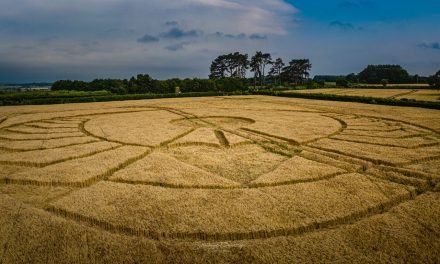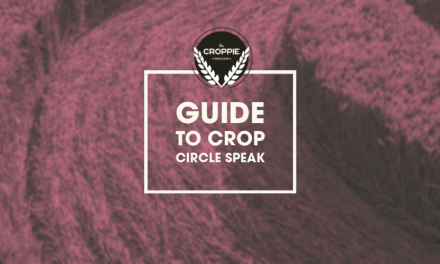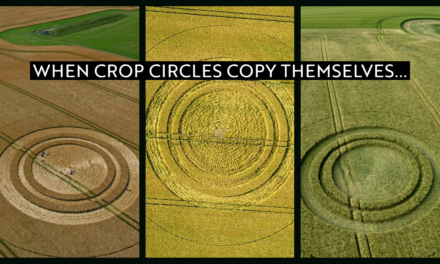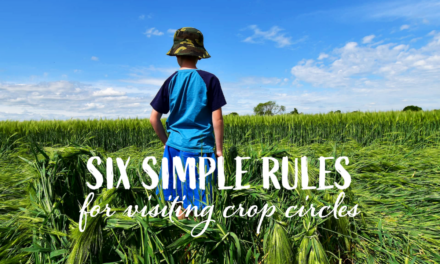
Dear Croppie: Are People Making Money From Crop Circles?

Do you hear the sound of a drum being repetitively beaten so often that it becomes accepted as having always been there? Have you heard about the ‘Kool Aid’ that was consumed at Jonestown when it was just as likely to have been ‘Flavor Aid’? We seem to accept the idea that a frequently repeated piece of gossip is a fact. Say it enough and people will believe it. And so it is if you frequent certain Facebook groups where it is endlessly suggested that the crop circle phenomenon is no more than a cynical money making exercise. A 2023 comment left by one Phillip Vella on Facebook encapsulates all of things that get said:
The opportunities of making money from crop circles has increased more and more these days, with the internet and all the associated merchandise sales, book sales, shows, tours, paid entry and some artists pay or compensate the farmers for the use of part of their fields, some very fortunate artists have made thousands and even hundreds of thousands from being paid by companies to do crop circles for them as a form of advertising.
These are common sentiments. Renowned attention seeker Guy Cross labelled the 2023 Charlton circle as ‘money making’ on the basis of Monique Klinkenbergh suggesting that visitors make a donation to the farmer. That she was speaking independently (the farmer was not asking for donations or an admission fee) was overlooked by Cross as he went on the attack and, not for the first time, made a complete fool of himself.

Social media makes it very easy for people to vent without always being too aware of the bigger picture and, when you think about how vast the internet is, it could well seem that there are more money making opportunities than ever before in the crop circle world. After all, we’ve all heard that The Croppie is making a fortune from its online shop … Steve Alexander is making a mint from publishing his calendars and yearbooks … Karen Alexander is selling drawings for hundreds of pounds at a time. But consider this: just because you’re selling doesn’t automatically mean that someone is buying. The Croppie will be straight up here; the total income from what we’ve sold online is not enough to have covered two months of our web hosting costs. (It has also been suggested we made £500 from selling the location of a Dorset crop circle to a well known photographer. Truth is, The Croppie did no such thing, but certain people swallowed what was a deliberate wind-up. The £500 figure ended up being repeated in a BBC article.) The Alexanders now have glaring gaps in their yearbook sequence and seem to be taking to the sky with less regularity than in previous years. Helicopter hire is hundreds of pounds a shot. We’ve heard up to £500 a flight. To produce their publications they rely on the generosity of third party photographers to help chronicle circles they were unable to get to. Besides, what real money is going to be made on a print-run of 250 or fewer books?
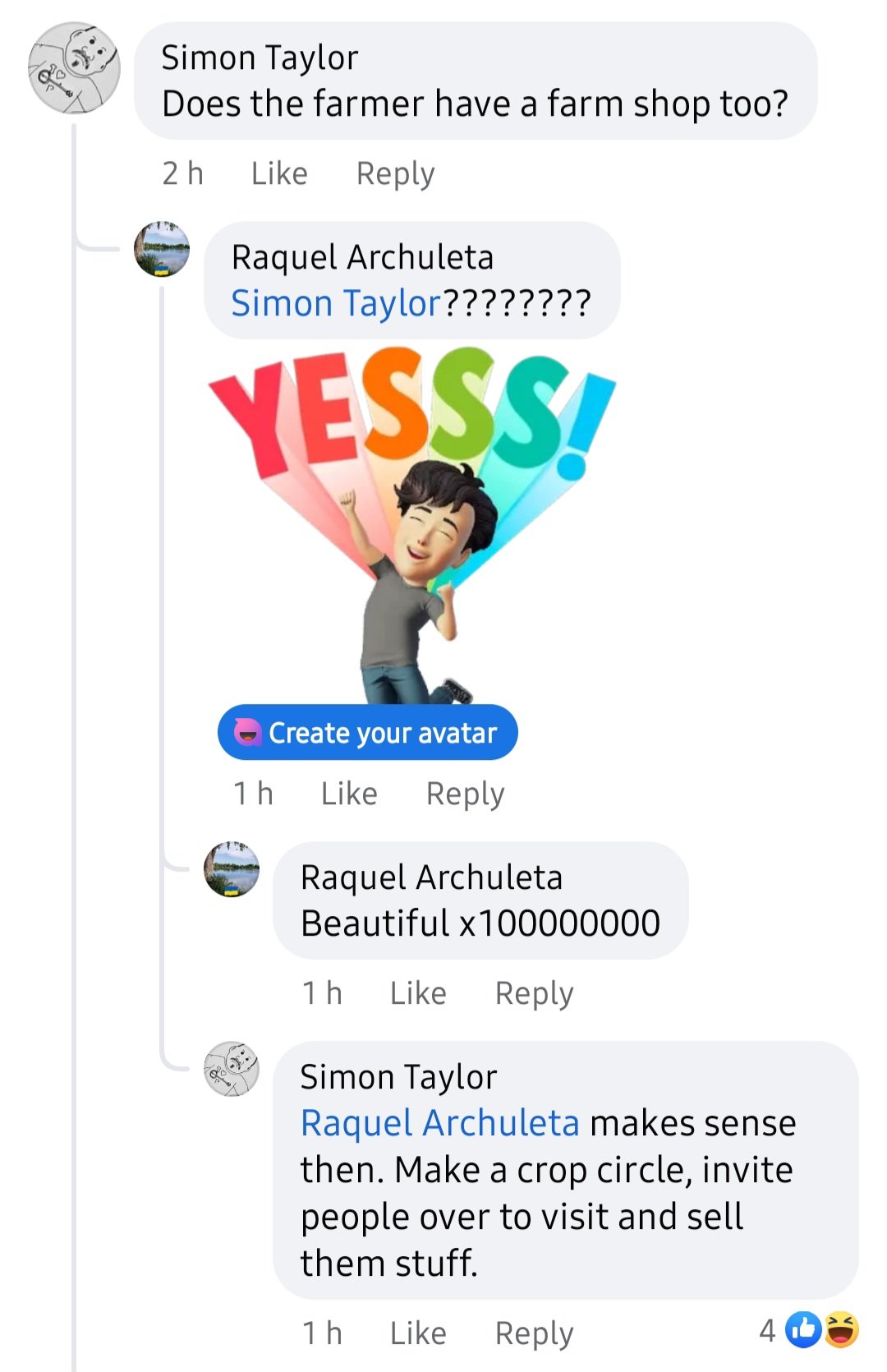
Typical cynicism … the farmer must have had a role in the making of a particular crop circle. The idiots concerned clearly didn’t do their research as there was no farm shop.
And what of the complicit farmer, making crop circles — or inviting the makers onto their land — to bring in some income? It’s nonsense and something we have addressed here. Where a sensible farmer could profit is by charging visitors the price of admission to a crop circle on their land. Nobody should see this to be a problem as the farmers are the party most affected by crop circles. We’ve seen in such situations that the word can be spread over social media that a circle is open to the public.

Although The Croppie hazards that although the internet may provide a wider sales platform than was previously imaginable, the reality is that public interest in the circles is a lot smaller than it has been in the past. So, how does this work?
During 1990 Britain went completely mad for crop circles. The phenomenon had passed from being local newspaper fodder to mainstream national (and international) television. Those of us around at the time remember seeing the coverage of Operation Blackbird at Westbury and the arrival of the enormous pictogram in East Field, Alton Priors. These were events that received a huge amount of exposure. Wiltshire became the world’s crop circle capital. Day trippers and tourists began to descend upon the county, accompanied by hardcore croppies keen to experience the phenomenon first hand. It was only to be expected that some individuals would begin to cash in. A tiny quantity were enterprising merchandisers. Many more were people who just happened to be in the right place at the right time, especially those in the hospitality trade who saw croppies filling their pubs and overnight accommodation.
Despite a lull caused by a dip in crop circle numbers in 1992, the tourists and croppies kept coming back to experience the phenomenon and spend their cash. The years between 1996 and 2010 were a wonderful period with a glut of intricate, large circles to delight visitors. These formations generally appeared thick and fast. There were photographs to take, t-shirts to print, Julia set fractals to carve into bespoke clock faces, cafes to run, books to sell, tours to organise, conferences to run, calendars to collate. These were things the public wanted at the time.
In 2011 things changed. The complexity and size of many of the circles took a huge dip.. Their numbers began to dive and the after effects have been felt ever since. Farmers began to regularly cut out new crop circles manifesting in their fields. Popular pubs shut or began to lose their links to croppiedom, conferences switched to smaller venues (the WCCSG conference at Marlborough disappeared and the Alexanders’ Summer Lectures downsized before going exclusively online), new books on the subject were fewer and increasingly far between. Familiar names left the scene and even this life. Crop circles have taken a hiding since 2011 and Wiltshire has become a less attractive tourist destination for it. You can no longer be guaranteed to see, nevermind visit, a crop circle in former hotspots like Warminster, Alton Barnes and Avebury. A twenty circle season would be seen as quite an achievement in the current climate.

More lies from someone in Israel who happens to be lying about their identity. There is no cash cow … only a bitter troll named Nurit.
With all of this considered, The Croppie thinks we need to forget ideas like those of a ‘cash cow’ mentioned in the screenshot above, possibly with the exception of those few individuals who act as tour guides. The Croppie has no idea of their incomings and outgoings so any queries should be sent in their direction. Overall, nobody (possibly excluding those tour guides) is making a living from their direct involvement with crop circles. Selling 250 calendars on a small profit margin isn’t going to pay the bills. Selling a few printed popsockets on Amazon, likewise.


